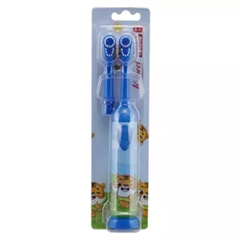Plaque and Oral Bacteria: Plaque is a sticky, colorless film of bacteria that constantly forms on our teeth. When we consume sugars and starches, the bacteria in plaque produce acids that can erode enamel and lead to tooth decay. Brushing disrupts and removes this plaque, preventing the buildup of harmful bacteria.
Toothbrush Design and Bristle Technology: The design of toothbrushes has evolved to effectively remove plaque and debris from teeth. Toothbrush bristles are arranged in various patterns to clean different surfaces of teeth. Bristles can be designed with varying textures and lengths to optimize cleaning.
Mechanical Action: Brushing works through mechanical action, physically scrubbing away plaque and food particles. Proper technique involves using gentle pressure and small circular motions to avoid damaging the gums and enamel.
Toothpaste and Fluoride: Toothpaste contains abrasives that enhance the cleaning action of brushing. It also often contains fluoride, a mineral that helps strengthen enamel and makes teeth more resistant to acid attacks. Fluoride works by remineralizing areas where the enamel has been weakened by acid.
Proper Brushing Technique: The correct brushing technique is crucial for effective plaque removal and preventing damage. The American Dental Association recommends holding the brush at a 45-degree angle to the gum line, using gentle circular or back-and-forth motions. Brushing should be done for at least two minutes, covering all surfaces of the teeth, including the inner and chewing surfaces.
Frequency of Brushing: Brushing should ideally be done at least twice a day – in the morning and before bedtime. This helps remove plaque and bacteria that accumulate during the day and night. Brushing after meals can also be beneficial, especially if consuming sugary or acidic foods.
Electric vs. Manual Brushes: Electric toothbrushes can enhance the effectiveness of brushing due to their oscillating-rotating or sonic technology. Studies suggest that certain electric toothbrushes can be more efficient at plaque removal compared to manual brushing, leading to improved oral health.
Gum Health: Proper brushing also involves gently cleaning the gum line, where plaque can accumulate and lead to gum disease. Massaging the gums while brushing helps improve blood circulation and gum health.
Dental Professionals’ Guidance: Dental professionals play a vital role in guiding patients on the science of brushing. They provide recommendations on brush type, technique, and oral hygiene practices tailored to individual needs.
Understanding the science of brushing empowers individuals to maintain optimal oral health. Regular and effective brushing, along with proper technique, can help prevent cavities, gum disease, and other dental issues, contributing to a healthy smile.








